
|
|
|
|
|
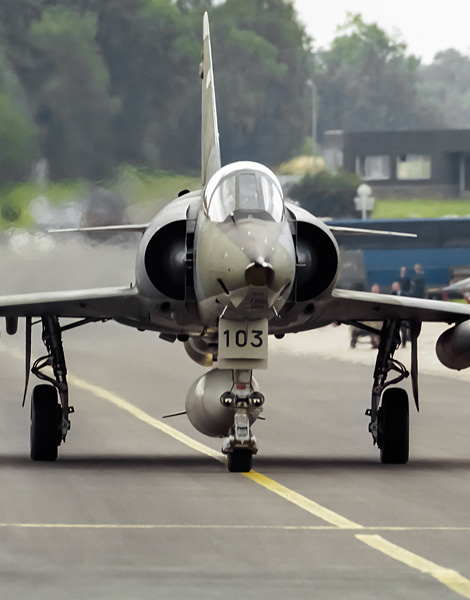
|
A Photo Reconnaissance Meeting; Florennes, July 24, 2002
The Recce Meet 2002; Text and Photograph's by Alex van Noye
During the Recce Meet there were several photo reconnaissance aircraft of the NATO partners present at Florennes. The aircraft will practice together and fly different scenarios. At Florennes were also a number of aircraft available which will disappear in the coming years like the Swiss Mirage IIIRS and British Canberra.
From Monday, July 22, 2002 until Friday, July 26, 2002, the Recce Meet 2002 took place on the Belgian airbase Florennes. The meeting was organized by the 1st Squadron which is part of the 2 Wing. This unit is the Belgian photo reconnaissance squadron. During the Recce Meet multiple photo reconnaissance units from across Europe would participate. There would be practiced in an international context. Besides the exercise also a spotter’s day was organized on Wednesday, July 24. Besides the Recce Meet participants also some other aircraft would come to Florennes just for the spotters. Next to the photo reconnaissance aircraft also aircraft such as the Alpha-Jet, the Marchetti, the Belgian Falcon 20 and an Allouette II were present at Florennes. During the spotters day an E-3 Sentry would make a few low approaches at Florennes. Eight Belgian F-16s took part during the Recce Meet; all these aircraft flew during the exercise. All aircraft were from the 2 Wing from Florennes. The Belgian F-16s carried under the fuselage the MARS pod (Medium Altitude Reconnaissance System). This pod is mounted under the fuselage of the F-16 and is a very large device on an F-16. This pod contains several cameras and can be used at low and medium altitude. If the F-16 carries this pod for reconnaissance missions, there is little room left for a weapon load. The Americans would participate with two F-16C Fighting Falcons. The planes were from Spangdahlem in Germany and they are assigned to the 22nd Fighter Squadron. These F-16s are equipped with photo reconnaissance pods under the fuselage of the aircraft.
The most unique participants of the Recce Meet in 2002 were the two Swiss Mirage IIIRS aircraft. These aircraft are at the end of their operational careers and will be taken out of service next year. The aircraft will not be replaced in Switzerland. At this time the last Mirages are flying at Dübendorf airbase at Fliegerstaffel 10. The Swiss Air Force decided in 1961 to purchase a Mirage IIIC. The Mirage was used as a
|
|
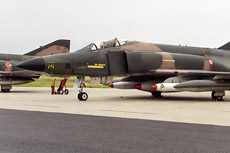
|
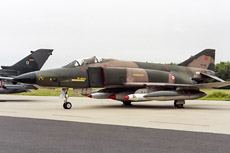
|
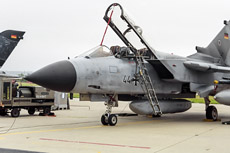
|
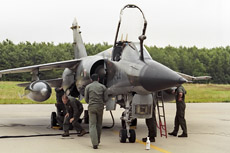
|
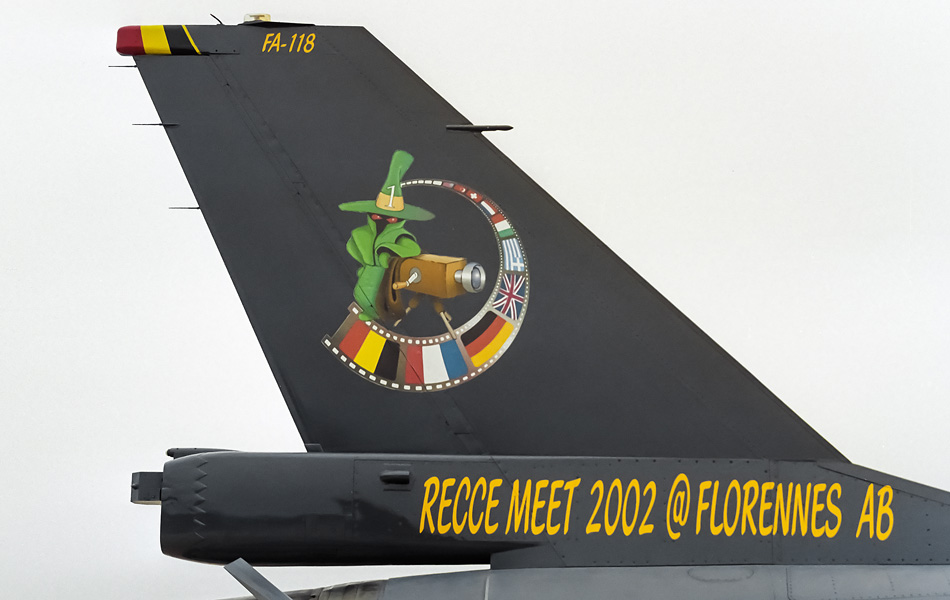
|
development tool for the Mirage IIIs. The aircraft was built by the Swiss company F+W in Emmen, which is nowadays known as RUAG. Sky high costs caused in Switzerland the Mirage affair in the national politics. In total there were 36 Mirage IIIS interceptor jets delivered to the Swiss Air Force. Besides this there were also four Mirage IIIBS and a Mirage IIIDS two-seater trainer of this type delivered. The Swiss Mirages had in contrast to the other Mirage IIIs a reinforced fuselage, a stronger chassis and a canard wing. The Air Force received in addition to the interception jets also 18 Mirage IIIRS photo reconnaissance jets. The Mirage IIIRS has some specific cameras in the nose section. The photo reconnaissance aircraft have no radar and have therefore a thinner nose section than interceptor variants. However, the Mirage IIIRS retained its two DEFA 20mm cannons. In the nose were five OMERA cameras mounted which were mounted at various angles and also had different focal lengths. The Swiss Mirages also got a front-facing panoramic camera in the tip of the nose.
Besides the Swiss, the French joined the Recce Meet with two Mirage 2000C and two Mirage F1CR aircraft. The Mirage F1CR is the photo reconnaissance variant of the Mirage F1 which has been developed specifically for the French Air Force. When it became clear that the Mirage F1 was a successful production aircraft, Dassault started an investigation for the possibility of a special version for reconnaissance. This request was presented to the French air force by Dassault. The first Mirage F1CR-200 flew on November 20, 1981. The Mirage F1CR has reconnaissance equipment which can be carried both internal and external. A SAT SCM2400 Super Cyclone infrared line scan module is installed in the space that was previously used for the gun. The space under the nose can be used for a Thomson-TRT 40 panoramic camera, or a Thomson-TRT 33 vertical camera. The Cyrano IVM radar-R contains additional ground-contour mapping modules. There are a total of 64 Mirage F1CR planes been built and they are mostly stationed at Reims. The Italians participated with a pair of AMX aircraft. The AMX flies in Italy at the 51° Stormo. The AMX was developed as a light attack fighter for close air support tasks. The AMX has in contrast to the Mirages no internal cameras for the photo reconnaissance missions. The AMX is able to carry the Oude Delft Orpheus pod which can be mounted beneath the fuselage of the AMX.
The Turkish Air Force was present at Florennes with two RF-4E Phantom II photo reconnaissance aircraft. The Turkish RF-4s are purchased from the German Luftwaffe. Germany had 88 RF-4Es in use which were phased out in 1992 and 1993. The Turkish Air Force bought 32 aircraft from the West German Air Force between 1992 and 1994. All the aircraft were stationed in Turkey at Eskisehir where they were assigned to the 113 Filo. Later, the RF-4s were assigned to the 172 Filo at the same airbase. A feature of the RF-4 is that the aircraft is always unarmed when the aircraft goes on a reconnaissance mission. The RF-4Es have like many other types of photo reconnaissance aircraft various cameras in the nose section of the aircraft. The RF-4 has three cameras in the nose which are looking forward and to both sides. The German Luftwaffe flew during the Recce Meet along with four Tornado IDS fighter-bombers. These aircraft were assigned to two units, namely, AG-51 and MFG-2. AG-51 is the German photo reconnaissance unit. The German Tornado IDS can be equipped with the RecceLite reconnaissance pod. This pod is the same like the Orpheus pod of the AMX and offers an extensive set of cameras and sensors. The last participant of the Recce Meet was an RAF Canberra. It is the last year that these aircraft are in operational service. The last operational Canberra’s in the world are equipped as photo reconnaissance aircraft and are stationed at RAF Marham. The aircraft have a camera which is mounted in the gondola in the bomb bay of the aircraft.
|
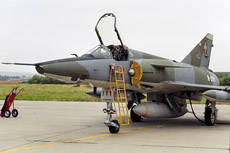
|
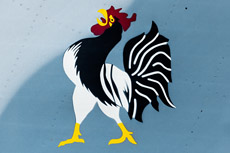
|
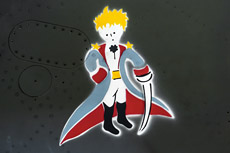
|
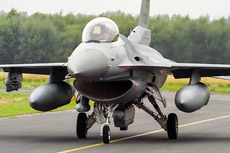
|
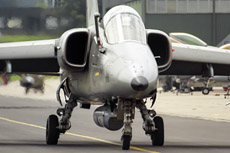
|
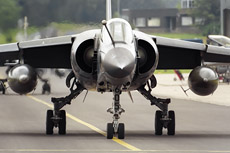
|
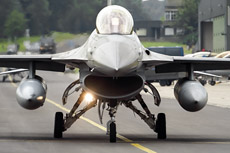
|
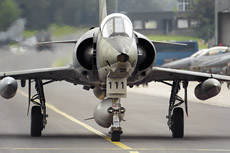
|
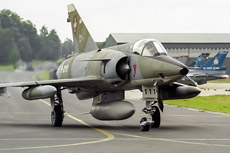
|
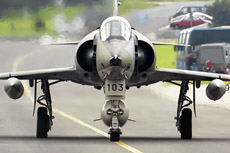
|
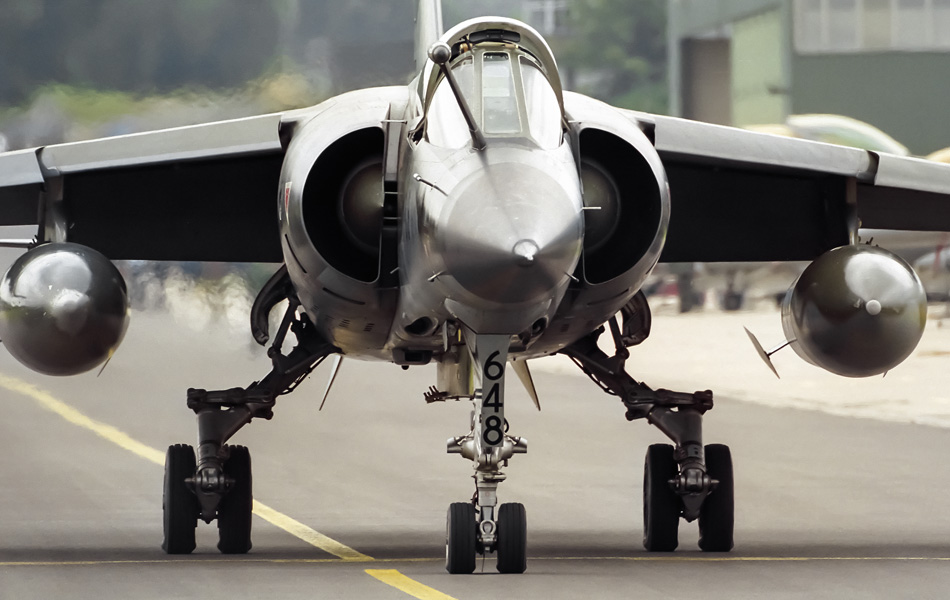
|
|
|

|







